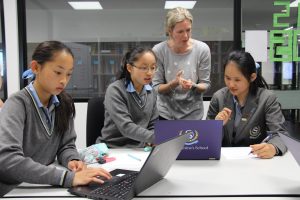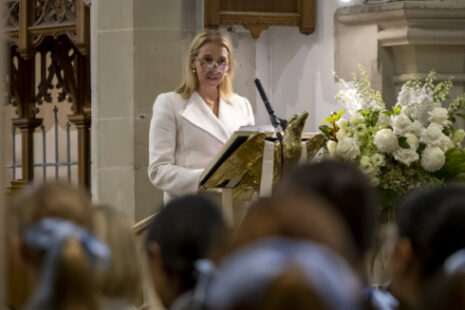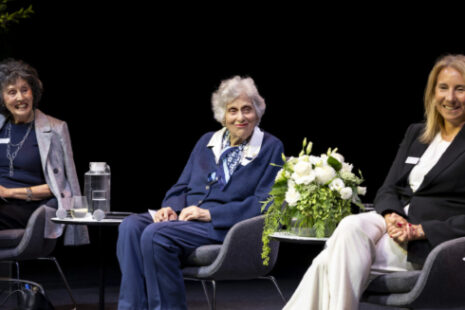Success in the Australian Mathematics Trust Enrichment Stage
Congratulations to all of the 2017 Maths Honours students on their enthusiastic participation in the Australian Mathematics Trust (AMT) Enrichment Stage.
This year we were delighted to have four girls awarded High Distinctions in the Euler Stage with scores in the top 6% of all participants. They were: Angela Yu (Year 7), Gloria Meng (Year 8), Tiffany Pham (Year 8) and Jessica Yang (Year 8).
The Enrichment Stage is a 16-week program taking place during Terms 2 and 3. It comprises seven parallel levels, all named after famous mathematicians. The Euler stage is recommended for mathematically interested Years 7 and 8 students and was completed by the Years 7 and 8 Mathematics Honours students this year. Leonard Euler was an 18th Century Swiss Mathematician after whom my favourite equation, Euler’s Identity (eiπ + 1 = 0), is named. The Gauss stage was undertaken by the Year 9 Mathematics Honours group in 2017.
Students participating in the Enrichment Stage study 12 covered different mathematical topics (which are beyond the confines of the core Mathematics syllabus) and then tackled a challenging problem, set by the AMT, on each topic. The problems all involved multiple step solutions and, in many cases, it is necessary to ‘play around’ with the scenario to gain initial insight into the problem before identifying an approach to cracking it. An example of one of the Euler problems from this year is:
When the middle digit of a three-digit number N is removed, the two-digit number thus obtained is N ÷16. Find all such numbers N.
Determination and sustained engagement are necessary to reach an accurate solution. The Honours girls have shown both of these qualities in their approach to the program this year. However, ‘finding the answer’ isn’t the end of the challenge as students are also tasked with writing up their solutions in a coherent and precise manner. This process generates a significant amount of learning as it involves reflecting on their solution and analysing the steps to form a structured and logical argument. For example, a complete solution to the question above requires a justification that all such numbers have been found and that there are no others.
While it would be possible to list all three-digit numbers and check which of them satisfy the requirements, this is not efficient nor elegant. The best solutions produced by students involved a systematic approach to reducing the set of possible values.
This year, the quality and rigour of the solutions produced by the girls has been particularly impressive. An example of one of the Euler problems and a solution written by a Year 7 student is:
Problem:
- Find all positive integers N such that the product 2017×N has exactly three divisors.
- Find all composite positive integers M such that the product 2017×M has exactly four divisors.
Student solution:
a) Due to the fact that 2017×N can only have 3 factors, we can first list out all the definite factors of 2017×N: 1, 2017 and 2017N. As you can see from the above, there is no space left for a completely different factor. N must be the same number as either 1 or 2017. If we tested N=1 then 2017 will only have 2 factors: 1 and 2017. Therefore, N can only equal 2017.
b) If we applied the same logic from part a) to part b) then we can first list the definite factors of 2017M: 1, 2017, 2017M and M. If we pretended that M = 4 (a square number) then the factors of 2017M would be: 1, 2017, 2017×4, 4, 2 and 2017×2. This would then give us 6 factors, which does not fit into the rules given to us. A square number already has the least number for factors any composite number can have (3 factors) so therefore there can only be one special number that can be M. The only way that M could be possible as a composite number is if all of its factors are either 1, 2017, 2017 and 2017M. That means that the factors of M must therefore be 1, 2017 and itself. Thus, only the number 4068289 (2017×2017) is possible because its factors overlap/repeat the factors of 2017M, therefore there will be exactly 4 factors. M can only equal 4068289.
St Catherine’s Mathematical Honours Program provides a unique opportunity for select students to enhance their established skills and academic talent within specialised small groups. This exciting learning experience is offered to students based on their academic results, teacher recommendations and motivation.
Congratulations to all the 2017 Mathematical Honours students on a fantastic year of fun and rigorous Mathematics!






